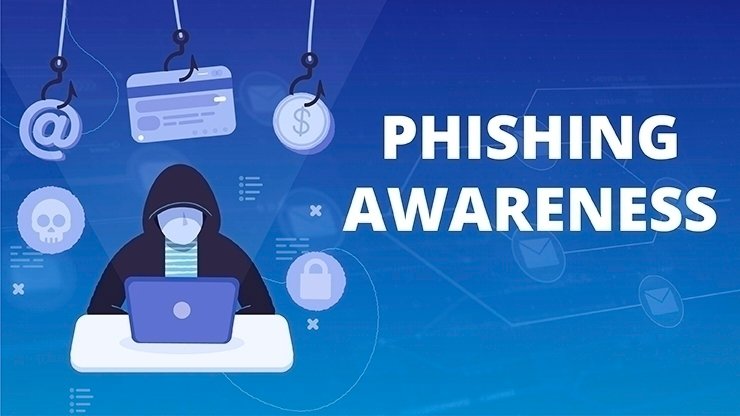What Are Phishing Attacks and How to Prevent Them
According to reports, 36% of cybersecurity breaches are caused by phishing attacks. Generally, phishing refers to malicious activities where bad actors tempt their victims into revealing sensitive information, such as:
- Social Security Numbers
- Bank Accounts
- Health Insurance
- Usernames and Passwords
- Credit Card Details
While it’s easy to say why anyone would reveal such sensitive information to anyone, right?
Well, cybercriminals and their phishing strategies have become sophisticated with time. From sending well-crafted emails to impersonating executives, cybercriminals use various methods to trap their victims.
Having said that, while phishing attacks are dangerous, they are preventable. Here, I’ll start by explaining the famous types of phishing attacks and discuss some preventive measures.
So, let’s get started!
Types of Phishing Attacks
Cybercriminals cleverly plan and organize phishing strategies to illegally access the sensitive information of their victims. Below, I’ll explain some of the most common types of phishing attacks.
Email Phishing
It is likely the most common type of phishing attack, where cybercriminals use emails to steal crucial information.
These emails appear to come from a legitimate source, such as a bank, government institution, or health insurance provider. Most times, bad actors attach a malicious link or file to those emails and create urgency so that people click on them and fall prey to their tactics.
Surprisingly, it is estimated that around 3.4 billion spammy emails are sent every day. And while Google blocks around 100 million email phishing attempts every day, it is still the most widely used phishing strategy of cybercriminals.
Spear Phishing
This type of phishing attack is mostly used to target executives and corporations. It’s a well-crafted strategy where the bad actors first collect personal information about their targets from multiple sources, such as social media profiles, company websites, or even LinkedIn profiles.
Then, based on the information collected, bad actors send personalized messages to those individuals. And while it seems unlikely that a tech-savvy person would fall prey to such tactics, it’s a highly effective phishing technique.
For instance, reports show that 23% of senior executives working at different organizations are likely to become victims of spear phishing.
Social Media Phishing
As the name indicates, this type of phishing targets individuals on social media platforms. Cybercriminals create fake profiles, connect with people, gain their trust, and persuade them to reveal sensitive information.
Bad actors also hack social media profiles of individuals in some cases. Then, they can retrieve sensitive information from that profile or send malicious links and attachments to other people.
How to Protect Yourself Against Phishing Attacks
I believe what makes phishing attacks so dangerous is the fact that you might not even realize if you’re being targeted by bad actors. Fortunately, several countermeasures can offer protection against phishing attacks. Let’s take a look.
Use a Secure Internet Connection
Almost all phishing attacks, be it email, spear, social media, or other types of phishing, target their victims via the internet.
So, it’s a must to have a secure connection, specifically one that can warn you against phishing attempts. Luckily, there are numerous Internet Service Providers (ISPs) that offer such security features.
For instance, I’m currently subscribed to one of the high-speed Optimum Internet plans. Besides reliability and affordability, this connection also offers extreme protection against malware, viruses, and phishing attacks. Plus, it can also alert me beforehand when I’m about to access malicious content.
All in all, I consider a secure connection as the first line of defense against phishing attacks. And, it’s best to use a connection that takes extreme security measures to safeguard your data and device from such attacks.
Look For Telltale Phishing Signs
As I mentioned above, some phishing attacks are so well-designed that you might not even know if you’re targeted by one. However, I believe that if you know what a phishing attack looks like, you can easily detect it.
However, some phishing attempts have suspicious signs that make them easier to detect. Below, I’ll share those apparent signs to watch out for.
- In most phishing techniques, bad actors try to create a sense of urgency so that their victims respond quickly.
- Phishing emails can have several grammatical and spelling errors, which you might not expect from a senior executive.
- Cybercriminals usually ask for sensitive details such as social security numbers, credit card details, etc.
- Receiving attachments or links from unknown senders can also be a telltale sign of a phishing attempt.
Don’t Trust or Act Hastily
A major reason why most people fall prey to phishing attacks is that they instantly trust the unknown sender or quickly open the malicious link or attachments. While other preventive measures against phishing attacks can help, I believe being vigilant about these attempts can help you avoid them.
Whenever you receive an email, SMS, or a message on social media, verify it first if it’s being sent by a legitimate source. For instance, if you receive an email from your manager asking you to reveal sensitive information, never do it before asking them in person.
Just like that, even if your best friend or a relative reaches out to you on a social media platform and asks for bank details, simply ignore or report them. In short, never act quickly to click on links and attachments, and always verify the source of emails, SMS, and messages you receive.
Frequently Asked Questions
Where can I report phishing emails?
You can report phishing emails by forwarding them to the U.S Cybersecurity and Infrastructure Agency (CISA) department at phishing-report@us-cert.gov.
Do phishing attacks always target corporations and senior executives?
No, bad actors can also target individuals, especially senior citizens, with phishing attacks.






